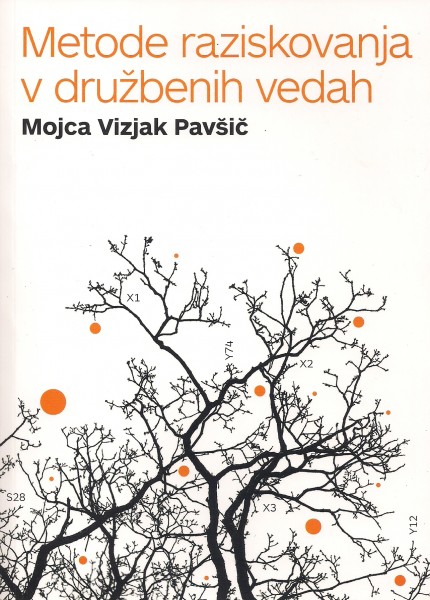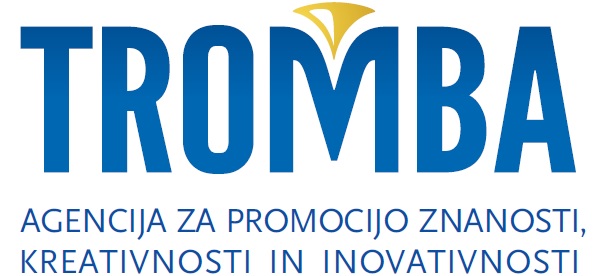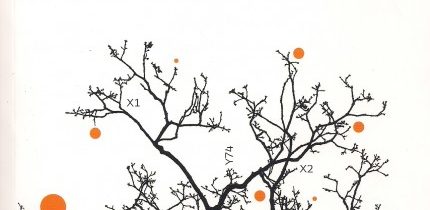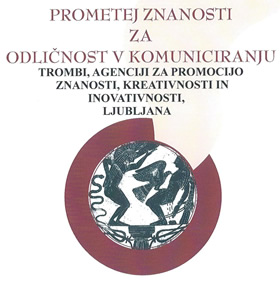New directions of development in social science research
Mojca Vizjak Pavšič: Metode raziskovanja v družbenih vedah
Foreword by Janez Stare, Založba FDV, Ljubljana 2015
Založba FDV, the publishing house of the Faculty of Social Sciences at the University of Ljubljana, has recently published Metode raziskovanja v družbenih vedah [Methods of Research in the Social Sciences] by the science journalist Mojca Vizjak Pavšič as a way of marking the 30th anniversary of the faculty’s Social Informatics programme. The book offers, among other topics, an excellent account of the development of social statistics and methodology in Slovenia, from the discipline’s humble beginnings, when it lagged far behind world statistics, to its current high level of quality in global terms.
Written in an attractive scientific literary style, the volume includes newspaper articles, book reviews and interviews with some of the world’s most prominent statisticians and methodologists, namely Mick P. Couper, Patrick Doreian, Anuška Ferligoj, Roberto Franzosi, Michael Greenacre, Jacques A. Hagenaars, David J. Hand, Peter V. Marsden, Donald B. Rubin, Willem E. Saris and Frans N. Stokman, most of which have previously appeared in Znanost, the science supplement of the Delo newspaper.

The book sheds light on the latest trends in the field of social science methodology around the world, while two topics covered in particular detail are the development of survey methodology and the analysis of social networks, both of which have experienced remarkable development, particularly in the last two decades. From the point of view of science journalism, explaining complex statistical and mathematical problems, concepts and processes in a clear, understandable and interesting manner is an enormous challenge – but one that is admirably met by Dr Vizjak Pavšič, who was awarded the prestigious “Prometheus of Science” prize for excellence in communication by the Slovene Science Foundation.
During the presentation of the book at the Faculty of Social Sciences, the author took part in an interesting discussion chaired by Ali Žerdin, editor of Delo’s Saturday supplement Sobotna priloga and author of the bestselling Omrežje moči [Network of Power], with Janez Stare, chair of the programme committee of the doctoral programme in Statistics, Valentina Hlebec, administrator of the doctoral programme Social Science Methodology, Katja Lozar Manfreda, head of the Chair of Social Informatics and Methodology, and Gregor Petrič, head of the Centre for Methodology and Informatics at the Faculty of Social Sciences.
Rapid development
If in 1987 Acad. Zdravko Mlinar was able to write, in the first issue of the Metodološki zvezki [Advances in Methodology and Statistics] collection published by the Methodology and Statistics Section of the Yugoslav Sociological Association, that “the situation in Yugoslavia is the complete opposite of the clear progress of quantitative methodology in the international environment, in particular in the West,” it is no longer possible today to talk about the initial discrepancies and deficiencies in Slovene statistics and methodology.
“International connections are of fundamental importance for the development of science in Slovenia,” notes Professor Janez Stare, who heads the Institute of Biostatistics and Medical Informatics at the Faculty of Medicine in Ljubljana, in his foreword to the book. “Here too, social methodologists, above all in the person of Professor Ferligoj, have played an enormously important role for Slovene statistics.”
Simultaneously with the scientific development of social methodology, it is possible to observe institutional development in Slovenia, from the establishment of research groups and centres whose primary research content is social methodology, to the development of new contents and university programmes at the undergraduate and postgraduate levels.
“When it comes to the analysis of social networks, which places in the foreground the connections between units of observation, and not merely their properties, a number of Slovene academics feature among the most prominent and respected names in this field anywhere in the world,” says Valentina Hlebec of the Chair of Social Informatics and Methodology at the University of Ljubljana’s Faculty of Social Sciences. “Anuška Ferligoj, Vladimir Batagelj and Andrej Mrvar – all of them full professors at the University of Ljubljana – have contributed so much to the development of network analysis that their names are familiar to every researcher who has ever used blockmodelling or analysed large networks. The Pajek software developed by Vladimir Batagelj and Andrej Mrvar, designed for large network analysis, is freely accessible to all users no matter what country they are from or what field they are working in, and in this sense represents the noblest result of scientific endeavour at a public university. The ‘Ljubljana school’ of network analysis, which links together researchers from the Faculty of Social Sciences, the Faculty of Mathematics and Physics, and the Faculty of Economics at the University of Ljubljana, is one of three world-famous European centres of the development of network analysis.”
It’s a small world
The field of network analysis has an extremely rich history, but as Patrick Doreian of the University of Pittsburgh explains in the book, serious research did not really begin until the late 1960s, coinciding with the rapid development of information technologies. Professor Doreian believes that social network analysis should play a bigger role in the social sciences: “In sociology we often talk about social structures and personally I find it difficult to think about a social structure without thinking about networks, about relationships between units.”
Professor Doreian also refers to Milgram’s famous experiment and his small-world theory: “The key to it is the idea that we are all much more connected to each other than we realise. I think what captures people’s imagination these days is above all the idea of six degrees of separation. In other words, that any two people in the world are connected by six or fewer steps. It all began with a highly creative experiment by Stanley Milgram, a professor at Yale University, who was trying to establish how many steps were necessary if someone wanted to send a message to another person whom he or she did not know, via indirect acquaintances. This question has since been explored by many other people and it has been shown that in this way it is possible to connect any two people in the world very quickly.”
Very interesting research of social networks presents also Peter V. Marsden of Harvard University, whose field of study includes the strength of weak ties. Professor Marsden explains that his research has shown that the wider your information network, the more different people it includes, the greater the likelihood that you will obtain relevant information.
One of the most famous studies or best-known papers in the field of network analysis was published in 1973 by the American sociologist Mark Granovetter of Stanford University. This paper discusses the phenomenon of how people get a job and where and how they obtain information about good jobs. The most striking discovery of this paper was that the most useful information is provided by people whom the individual does not know very well. This finding is referred to as the strength of weak ties.
Granovetter’s research showed that weak ties are valuable when looking for a job, because people whom you know very well tend to know similar information to the information you know yourself, while people you do not know so well possess other information. Whether you are looking for a job or a new home, when you are trying to find something new, it is often very useful to have contact with people who are completely different from you, because they will supply different information. As Professor Marsden points out, we can use this knowledge not only to find a job but also to find everything else that is difficult to find. We can use it in scientific work, where people with good connections outside their narrow field of research are more likely to find new information, and will thus find an easier and more creative solution to their research problems.
“If you want to get good ideas you have to be open to new things and you cannot only believe in your own theory and knowledge from your immediate environment, or you will soon begin to go round in circles and your efforts will be unsuccessful.” This is the view of Anuška Ferligoj of the University of Ljubljana, who in an extensive interview presents, among other topics, the results of her research on co-authorship networks in the field of science: “It has been shown that co-authored publications are often of a higher quality, are scientifically more notable and are cited more frequently. If there are several co-authors, each of them sees the topic under consideration from his or her own angle. The authors can also criticise each other, and this can result in a much better study and, consequently, a purer text than if it had been prepared by just one author. For this reason, co-authorship is highly recommended. We should be encouraging researchers at universities and scientific institutes to work in groups, preferably interdisciplinary groups, and to work together on the preparation of papers, books and other presentations of their work.”
Missing data can be of key importance
Donald B. Rubin of Harvard University, whose work has changed the way we think about missing data in statistics, and who is especially known for his discovery of the EM algorithm, draws attention to how important missing information can be. He is responsible for the introduction of expressions such as: data missing at random, missing completely at random, distinctive parameters, ignorable data, etc. “I think that these are ideas of fundamental importance,” says Professor Rubin. “If we name concepts correctly and define them precisely, this means enormous progress in resolving the problem. In other words, it is essential to have names for the concepts you are thinking about. It becomes difficult if the expressions you use are not defined; if you are solving a problem which you don’t know how to classify and you don’t know whether the model you are using is suitable.”
David J. Hand of Imperial College London talks in the book about classification as a basic mental process, emphasising that classification represents the foundations of our knowledge and understanding of the world. The classification of objects, activities and events by identical or similar characteristics into types, groups or classes enables us, in our everyday life, to effectively process the infinite masses of facts and impressions with which we are constantly confronted. Classification, explains Professor Hand, also represents the foundations of science, since we build theories on the basis of observations of similarities and differences between data, and in this way establish the laws that appear in nature.
Michael Greenacre of Barcelona’s Pompeu Fabra University talks about correspondence analysis, as one of the central methods for the analysis of phenomena that are presented with nominal variables. Since it shows the simultaneous effect of a large number of variables, it can help explain very complex phenomena such as political views, consumer behaviour, delinquent acts, etc. The essential characteristic by which correspondence analysis differs from other methods for the analysis of nominal variables is its good graphical presentation, which greatly eases and improves the possibility of interpreting the phenomena studied.
Also extremely interesting is the interview with Frans N. Stokman, who is professor of social science research methodology at the University of Groningen and the founder and scientific director of DECIDE (Decision Insights and Developments in Europe: Strategic Decision Making through Technology), a research centre at the university that looks at group decision-making as a basic social process.
Social upheavals and conflicts are the central theme of the research of Roberto Franzosi, who is professor of sociology and linguistics at Emory University in Atlanta. He points out that econometric models of strikes, which he first began studying as a doctoral student at Johns Hopkins University in Baltimore are incapable of adequately presenting this important social movement as a consequence of the mutual actions of various participants, above all workers, strike-breakers, trade unions, employers and the state. “In other words,” continues Professor Franzosi, “econometric models are unable to present strikes as a social relationship. Although they are based on time series, there is no time in econometric analyses, at least not time as understood by historians. A broader understanding of historical processes and documents is necessary and, perhaps most importantly, a new approach to researching social conflicts, which is something I am still working on.”
“Sociology needs far more complex models of the world,” observes Jacques A. Hagenaars of Tilburg University in the Netherlands during his highly critical assessment of the average level of sociological research. “Many models were developed years ago but only now are we able to use them in sociological research. Powerful modern computers enable us to carry out a wide variety of micro-simulations that show us what will change in society if we change certain data. Thus, for example, we can quickly estimate the effects of specific political or economic measures and establish what the consequences would be for a narrow or broader social group,” explains Professor Hagenaars.
“Survey research also needs to adapt to the development of new technologies,” say Willem E. Saris of Pompeu Fabra University and Mick P. Couper of the University of Michigan in an extensive joint interview. Surveys are among the most commonly used tools for data collection in the social sciences, where because of the complexity and frequently subjective nature of the object of study it is often difficult to ensure reliable and valid measurements. Drawing the right conclusions from enormous quantities of data is a great challenge for methodologists, say Professors Saris and Couper, as they explain their views on solving the problems that researchers encounter in survey research.
The book, which features excellent original photographs of the interviewees by Mojca Vizjak Pavšič and clear pictorial representations of networks prepared by Vladimir Batagelj and Nataša Kejžar of the University of Ljubljana, also draws attention to the importance of linking the social sciences with mathematical modelling, computer technology and sound empirical data, so as to enable better understanding of society as a whole and facilitate the development of more suitable social, economic and political measures. Above all, it encourages us to think about the complex networks in which we live, of which we are part, and which we are constantly helping to create, and about our responsibility for our own micro-networks and for wider networks that grow into all-encompassing global networks.
Ina Petric






